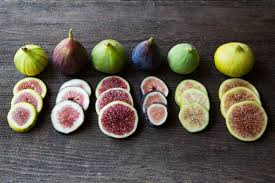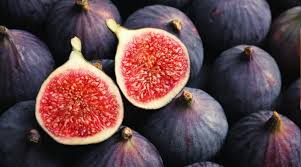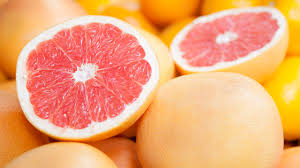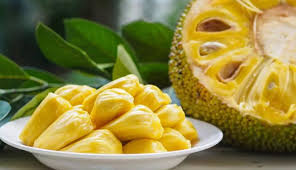Content of the Article
FIGis among the oldest fruits consumed by humans. Some scientists say that the forbidden fruit collected by Eve is not apple, FIG even believes that it is.
FIGDid you know that in is Cleopatra's favorite fruit? Figs have endless benefits and different stories.
What do you know about a fruit with such a long history? Request Things to know about figs...
What are figs?
FIGis the fruit that grows on the Ficus tree, a member of the mulberry family or Moraceae. It belongs to the genus Ficus and its scientific name is Ficus carica.
FIG tree, it is a deciduous tree and can grow up to 7 to 10 meters in height. It has a smooth white skin.
Fig treesgrows wild in dry and sunny areas with fresh, deep soil. They also tend to grow in rocky areas and can grow even in less fertile soils.
Fig trees It can live up to 100 years and has long and curved branches that can exceed the height of the tree.
FIG It is native to the Middle East and Western Asia and is now grown all over the world. Fig trees It has been naturalized in various parts of Asia and North America.
Figs are the pinnacle of many single-seeded fruits and grow up to 3 to 5 centimeters. Its fruit is green when growing and turns purple or brown when ripe.
İfig It has a unique taste and texture. The smoothness of the fruit and the crispness of the seeds make a nice combination to eat. Dry fig fresh figs are available throughout the year from June to September.
Fig Types
Five common fig type has. Each type is distinctly different in flavor and sweetness.
Black Fig
Black fig blackish-purple on the outside and pink inside. It is incredibly sweet. It is perfect for dessert to eat or used in cake or cookie recipes to enhance flavor.
Kadota Fig
These figs have purple flesh and green color. Of all the varieties of figs, this is the least sweet. Perfect for eating raw.
Calimyrna Fig
It is greenish-yellow outside and amber inside. It is larger compared to other types and has a strong nut flavor.
Brown Fig
Rather, these varieties grown in Turkey, purple-skinned and red meat. Mild in flavor and other fig speciesIt is less sweet than the first.
Adriatic Fig
The rind is light green and the inside is pink. They are also called white figs because they are very light colored. It is extremely sweet.
Nutrition Facts of Figs
FIG It contains various essential nutrients. It is rich in phytonutrients, antioxidants and vitamins.
FIGIt is a rich source of natural sugars and soluble fiber. One small (40 grams) nutritional content of fresh figs is as follows:
Calories: 30
Protein: 0 grams
Fat: 0 grams
Carbs: 8 grams
Fiber: 1 grams
Copper: 3% of the Daily Value (DV)
Magnesium: 2% of the DV
Potassium: 2% of the DV
Riboflavin: 2% of the DV
Thiamine: 2% of the DV
Vitamin B6: 3% of the DV
Vitamin K: 2% of the DV
Fresh figsis a low-calorie snack. on the other hand dry figAs sugar is concentrated when dried, fruits are high in sugar and rich in calories.
What Are the Benefits of Figs?
Improves digestive health
FIG It relieves constipation and improves overall digestive health. Soak 2-3 figs in water one night and consume it the next morning with honey. With this formula constipation You can solve the problem.
Fiber is great for digestion and FIG Provides dietary fiber that aids in healthy bowel movement and relieves constipation.
It adds volume to the stool and supports its smooth passage through the body. FIGThe fiber in also treats diarrhea and relaxes the entire digestive system.
Improves heart health
FIGIt lowers triglyceride levels in the blood and contributes to improving heart health.
Triglycerides are fat particles in the blood that are the leading cause of heart disease. FIGThe antioxidants in the body destroy free radicals in the body that block the coronary arteries and cause coronary heart disease.
FIG It also contains phenols, omega 3 and omega 6 fatty acids that reduce the risk of heart disease.
Lowers cholesterol
FIGa soluble fiber known to lower cholesterol levels pectin It contains. Fiber in figsCleans excess cholesterol in the digestive system and carries it to the intestines to eliminate it.
FIG it also contains vitamin B6, which is responsible for producing serotonin. Serotonin boosts mood and lowers cholesterol.
Dry figReduces overall cholesterol as it contains omega 3 and omega 6 fatty acids and phytosterols that reduce the natural synthesis of cholesterol in the body.
Prevents colon cancer
FIGRegular consumption of in can reduce the risk of colon cancer. The fiber in the fruit helps to quickly eliminate waste from the body that works for colon cancer prevention.
FIGThe numerous seeds in the colon contain high levels of mucin that collects waste and mucus in the colon and cleans them.
Treat anemia
In the body iron deficiencycan cause anemia. Dry figIt contains iron, an important component of hemoglobin, and eating this dried fruit improves blood hemoglobin levels.
Regulates blood sugar levels
The leaves of the fruit play a more important role in blood sugar. Fig leaves It has properties that help regulate blood sugar levels.
According to one study, consuming fig leaves helped control the increase in postprandial blood sugar in insulin-dependent diabetic patients.
Fig leaves You can consume it in the form of tea. You can boil 4-5 fig leaves in filtered water and drink them as tea.
You can also dry the fig leaves and grind them to make powder. Add two tablespoons of this powder to a liter of water and boil. Your tea is ready!
Prevents breast cancer
FIG It is among the fruits with the most fiber. It has been found that women who consume more dietary fiber during adolescence and early adulthood have a lower risk of developing breast cancer.
High fiber intake is associated with a 16% lower overall risk of breast cancer and a 24% lower risk of breast cancer before menopause begins.
Strengthens bones
FIG calcium, potassium and magnesium These are all minerals that help bone health. FIGincreases bone density and reduces the breakdown of bones that begin with age.
FIGContains potassium, which counteracts the increased urinary calcium loss caused by high salt consumption. This prevents thinning of the bones.
Rich in antioxidants
FIGis the powerhouse of antioxidants, and antioxidants neutralize free radicals in our body and fight disease.
FIG It is a rich source of phenolic antioxidants. The antioxidants in the fruit enrich the lipoproteins in the plasma and protect them from further oxidation.
It regulates high blood pressure
Studies, daily eating figsIt shows that it helps to lower blood pressure. While the fiber in the fruit reduces the risk of high blood pressure, its potassium content also helps to preserve it.
Besides potassium, FIGThe omega-3s and omega-6s found in the oil also help maintain blood pressure.
Increases sexual stamina
FIGis considered a great sexual boost. Calcium, iron, potassium and zinc rich in terms. It is also rich in magnesium, the mineral required to produce the sex hormones androgens and estrogens.
The fruit helps with various sexual dysfunctions such as sterility, erectile dysfunction and sexual appetite. There is no strong scientific support but in many cultures FIG It is considered a symbol of fertility.
It also produces an amino acid responsible for increasing the production of nitric oxide, which dilates blood vessels and provides blood flow to all parts of the body, including the genitals.
To be effective in this matter FIGSoak it in milk overnight and eat it the next day.
Helps treat asthma
An effective method of dealing with bronchial asthma is powdered fenugreek seeds, honey and FIG to consume the mixture. To get rid of asthma fig juice You can also consume.
FIG It moisturizes the mucous membranes and drains sputum, thus alleviating asthma symptoms. It also contains phytochemical compounds that fight free radicals that trigger asthma.
Reduces sore throat
FIGIt is soothing for the throat and reduces pain. Also, it is a natural treatment for tonsillitis. It helps reduce swelling and irritation caused by the condition.
Prevents macular degeneration
FIGis the leading cause of vision loss in the elderly macular degenerationIt can help prevent n.
High amount in the fruit Vitamin Aimproves eyesight and prevents macular degeneration. Vitamin A is an antioxidant that improves eye health. It protects the eyes from free radicals and prevents retinal damage.
Improves liver health
FIG It cleans the obstructions in the liver, thus increasing its health. A study, fig leavesshowed that an extract prepared from
It is a natural laxative
FIGacts as a natural laxative due to its high fiber content. It softens the stool and provides easy digestion.
Treat hemorrhoids
Dry fig hemorrhoids helps to cure. It softens the stool and reduces the pressure on the rectum. Three to four FIGSoak it in water and consume it twice a day. You can also drink the water in which it is kept.
It is a good source of energy
Daily eating figshelps to feel energetic. The carbohydrates and sugar found in the fruit increase the percentage of energy in the body.
Prevents insomnia
A balanced diet is essential for good sleep. Eating figsimproves sleep quality. An amino acid that helps create melatonin that speeds up the body's transition to sleep tryptophan It contains.
FIG It is a rich source of magnesium. Magnesium deficiency in the body creates stress and irritability, leading to insomnia.
Strengthens immunity
FIG It kills bacteria, viruses and roundworm in our bodies, otherwise it can cause health problems. It contains nutrients such as potassium and manganese that strengthen the immune system along with antioxidants.
Benefits of Figs for Skin
Prevents wrinkles
One study found that fig extract has an antioxidative and anti-collagenase effect on wrinkled skin and reduced the wrinkle depth percentage.
It also increases skin moisture. Therefore, FIG It can be used as a remedy for hyperpigmentation, acne, freckles and wrinkles.
Rejuvenates the skin
FIG perfect for the skin. Whether you eat them or apply them as a mask, it enhances your skin. Here is a mask recipe.
A big fig or two little fig get it. Cut it in half, remove the meat and mash it well If you want to improve the texture of your skin, add a teaspoon of honey or yogurt.
Apply the mask on your face and keep it on for 5 minutes. Wash it off with water and say hello to a regenerated skin.
Softens and stretches the skin
FIGContains high amounts of vitamin C, a powerful antioxidant that helps lighten skin tone. Mix five figs to get a smooth paste.
Add powdered oatmeal, milk, and half a teaspoon of dried ginger powder to each. Mix well to form a smooth paste. Use this face mask twice a week to get soft and smooth skin.
Benefits of Figs for Hair
Moisturizes the hair
FIGis very popular in the hair care industry because its extracts are used to create conditioners. These extracts provide moisture to the scalp and help detangling the hair. It moisturizes the hair without weighing it down.
Promote hair growth
Hair loss It usually occurs due to the lack of proper nutrition. FIGContains hair-friendly nutrients such as magnesium, vitamin C and vitamin E that support hair growth. The essential nutrients contained in this fruit stimulate blood circulation in the scalp to accelerate hair growth.
How to Store Figs?
Fresh figs Between June and November, dry fig is available year-round. FIG It must mature before it is collected.
- Choose figs that are plump and soft.
- It should not have bruises and dents.
- Fresh figsEmits a slightly sweet scent when light pressure is applied Scented fig is an indication that it has begun to ferment.
- Fresh figs Since it is very sensitive, it does not have a long shelf life. Therefore, it should be stored in the refrigerator immediately after purchase. Put it in a plastic or zip bag.
Slightly ripe FIGTo ensure full ripening, it should be kept at room temperature and away from direct sunlight.
- Fresh figs They should be consumed within 2 to 3 days as it deteriorates quickly.
How to Eat Figs?
Fresh Figs
Fresh figs It's low in calories and a great snack, making a great addition to salads or desserts. You can also make canned fig jam or fresh figs.
Dry fig
Dry figIt is high in sugar and calories, so it should be consumed in moderation. It may be more effective than fresh figs at treating constipation.
Fig leaf
Although it's hard to find fig leaves It is nutritious and can be used in a variety of ways.
Fig leaf tea
Fig leaf tea dried fig leavesIt is made from.
Fig you can consume it in a variety of ways, but due to its high sugar content dry figYou should consume it in moderation or use it as a home treatment for occasional constipation.
Side Effects and Harm of Figs
FIGYou need to be careful when consuming large amounts of food, as it can cause allergic reactions from vomiting to diarrhea and even itchy skin.
People with sensitive skin or a history of allergies, eating figsAvoid applying to the skin or skin.
Never ripe FIG do not consume. They produce white latex containing compounds such as furocoumarins and 5-methoxy psoralen (5-MOP), which can cause severe allergy in the mouth and lips that can quickly spread to other body parts.
FIGContains fructose and should be consumed in moderation.
Fig calories more calories of dried figsis high and eating too much can cause weight gain.












